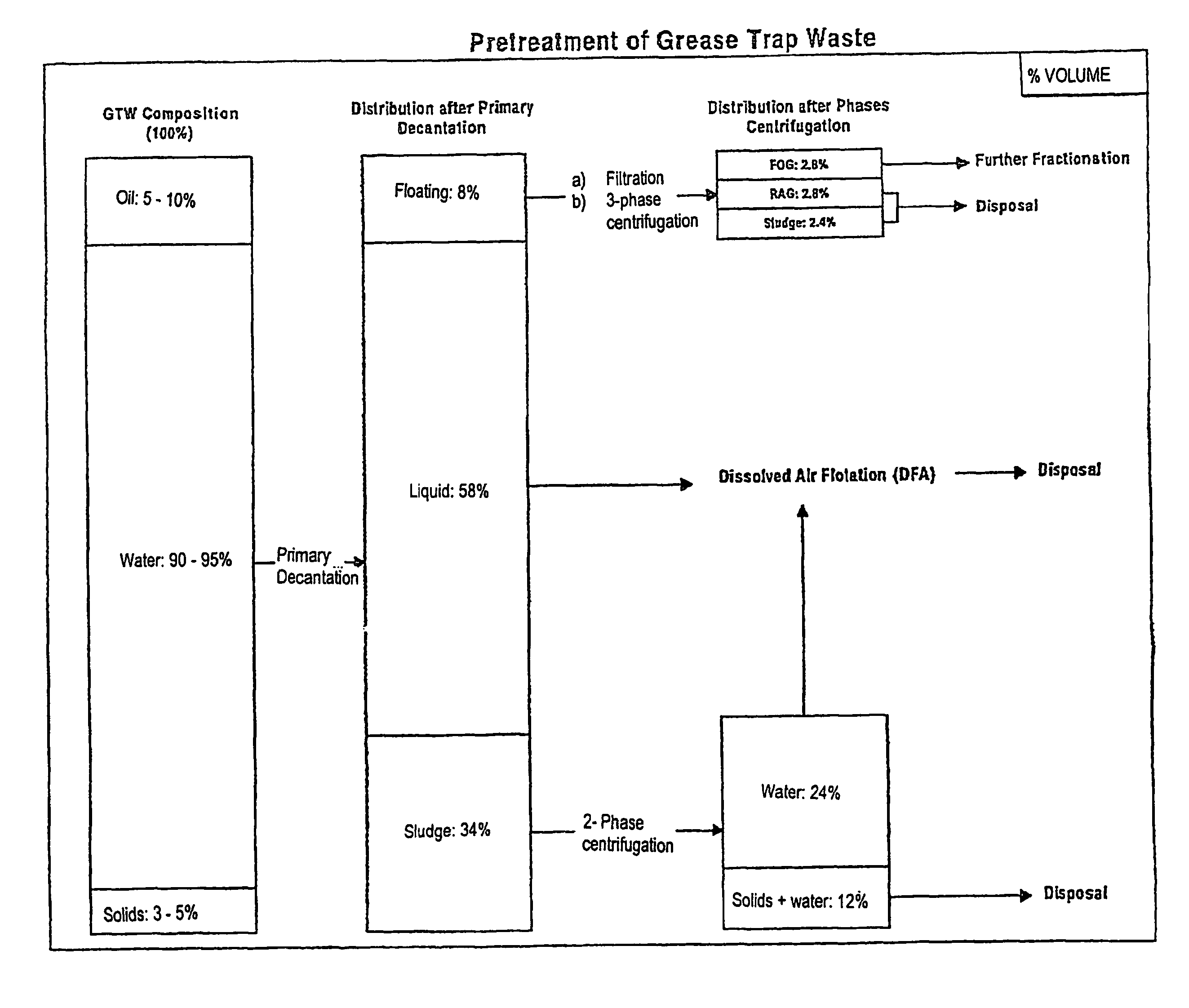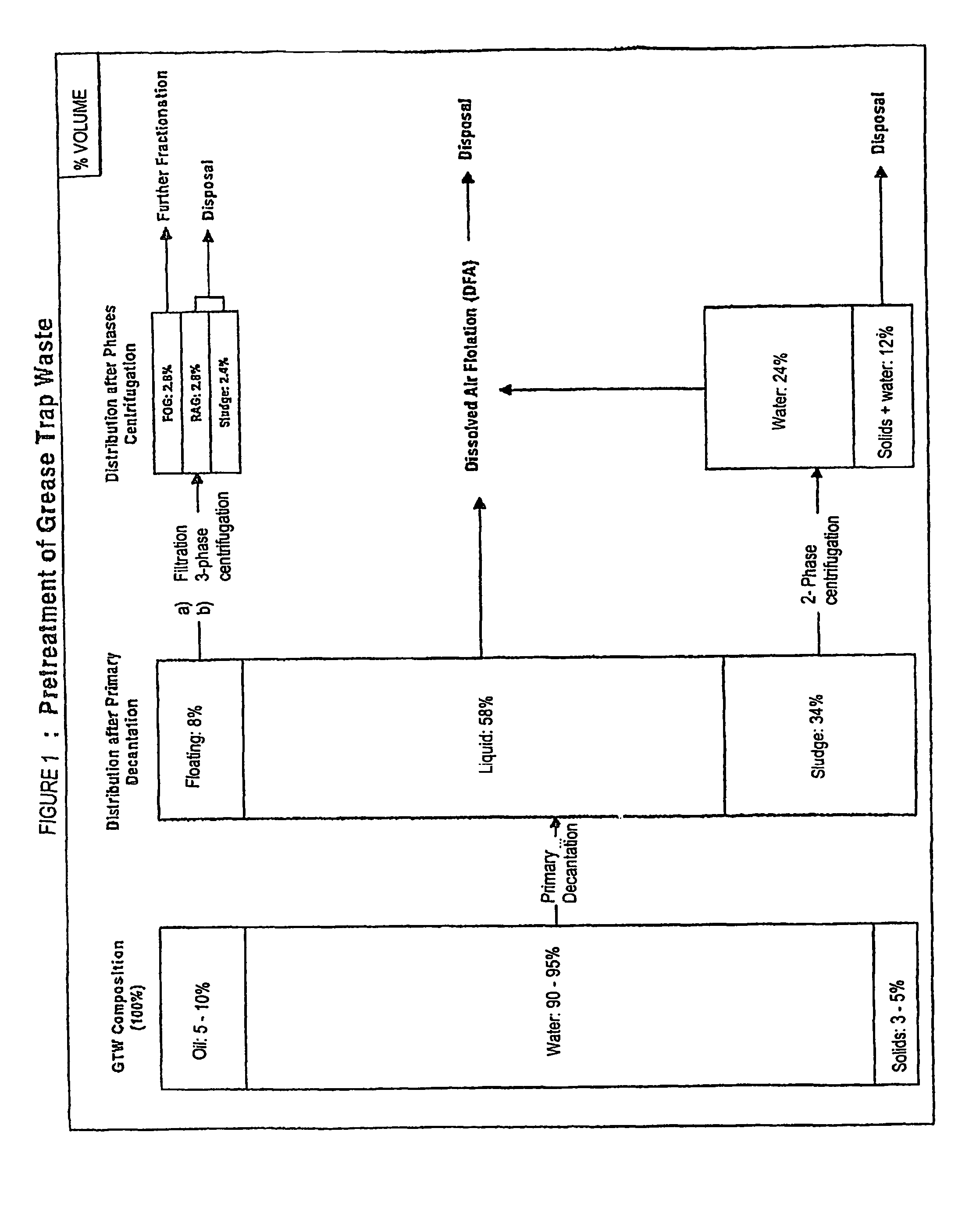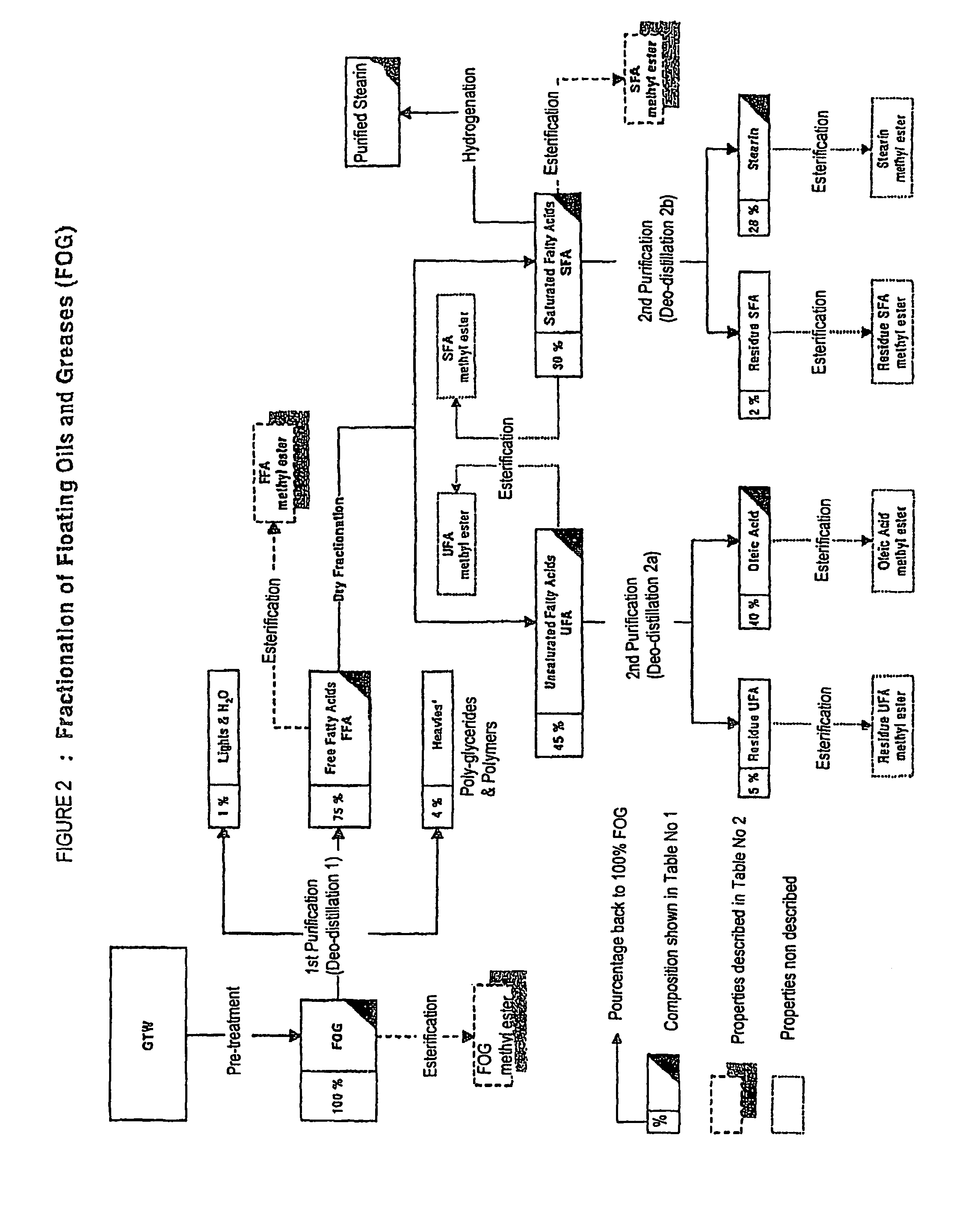Method for fractionating grease trap waste and uses of fractions therefrom
a technology of grease trap waste and fractionation method, which is applied in the direction of fatty-oil/fat refining, fatty-oil/fat separation, carboxylic compound separation/purification, etc., can solve the problems of long reaction time, large amount of catalyst, and easy formation of dark-colored acid
- Summary
- Abstract
- Description
- Claims
- Application Information
AI Technical Summary
Problems solved by technology
Method used
Image
Examples
example 1
Pretreatment of GTW.
[0083]10 metric tons of Grease Trap Waste (GTW) coming from the food industry of the Boston metropolitan area was decanted in tank at room temperature for 48 h. The upper floating layer (800 L) was separated and heated to 90° C. until a very fluid solution was obtained. This solution was hot filtered in a UNI-FRAME™ rotary screen to eliminate particles greater than 500 μm. The filtered solution was centrifuged in a 3-phase centrifuge to obtain 280 L of a floating oil and greases (FOG) fraction. Composition of FOG is presented in Table No. 1.
example 2
First Purification (Deo-Distillation) of FOG.
[0084]10 Kg of FOG are deodorized and distilled following the process conditions described herein:
[0085]
1stTempératurePressureSteamPurification(C.)(mbar)Time (min)injection (%)Deodorization1502601.5Distillation2003300.5
[0086]At the end of deodorization the product is not cooled but immediately distilled.
[0087]Yields for each fraction (i.e. lights, FFA and heavies) are shown in FIG. 2. Characterization of FFA is presented in Table No. 1.
example 3
Dry Fractionation of FFA.
[0088]Free fatty acids (FFA) are heated to 60° C. until complete dissolution. A detailed program of nine cooling steps follows. The crystallization conditions were:
[0089]
CoolingTempérature (C.)Step TimeCooling SpeedCumulativeStepInitialFinalΔT(min)(C. / min)Time (min)160600600602604020201803404004001204402020400.51605202002001806201010400.2522071010080030081055100.53109550650375
[0090]The filter is pre-cooled to the same temperature of filtration (i.e. 5° C.) and this temperature maintained all over the filtration time. Yields for each fraction, Unsaturated Fatty Acids (UFA) and Saturated Fatty Acids (SFA), are shown in FIG. 2. Characterization of them is presented in Table No. 1.
PUM
| Property | Measurement | Unit |
|---|---|---|
| pressure | aaaaa | aaaaa |
| temperature | aaaaa | aaaaa |
| hydrogen pressure | aaaaa | aaaaa |
Abstract
Description
Claims
Application Information
 Login to View More
Login to View More - R&D
- Intellectual Property
- Life Sciences
- Materials
- Tech Scout
- Unparalleled Data Quality
- Higher Quality Content
- 60% Fewer Hallucinations
Browse by: Latest US Patents, China's latest patents, Technical Efficacy Thesaurus, Application Domain, Technology Topic, Popular Technical Reports.
© 2025 PatSnap. All rights reserved.Legal|Privacy policy|Modern Slavery Act Transparency Statement|Sitemap|About US| Contact US: help@patsnap.com



